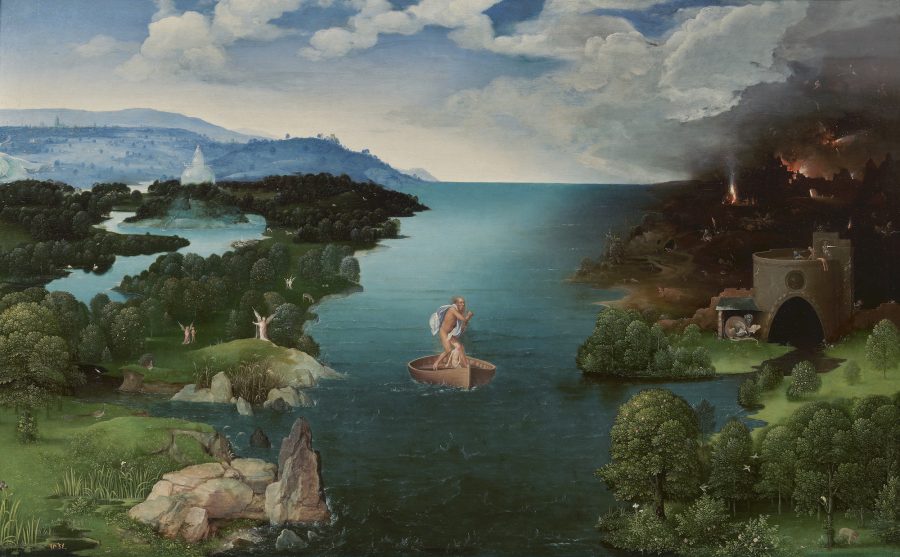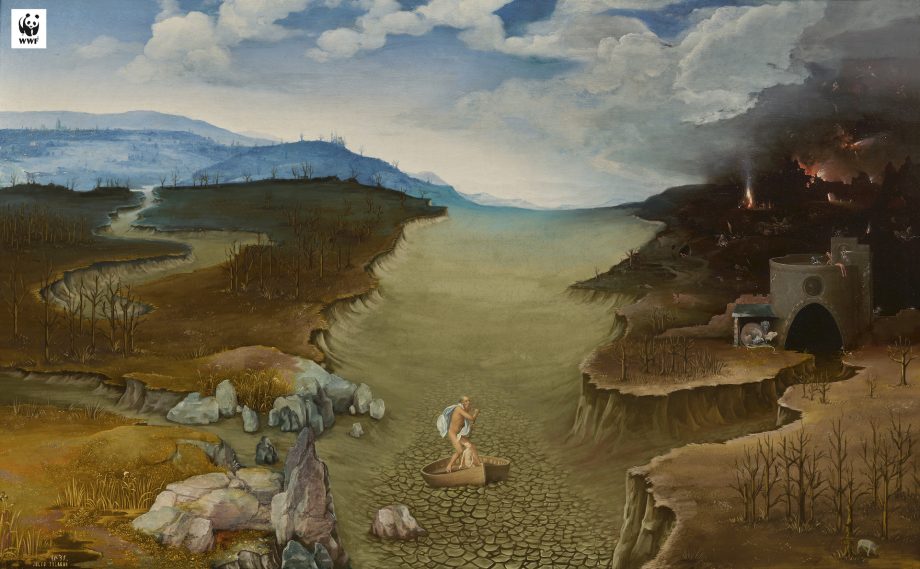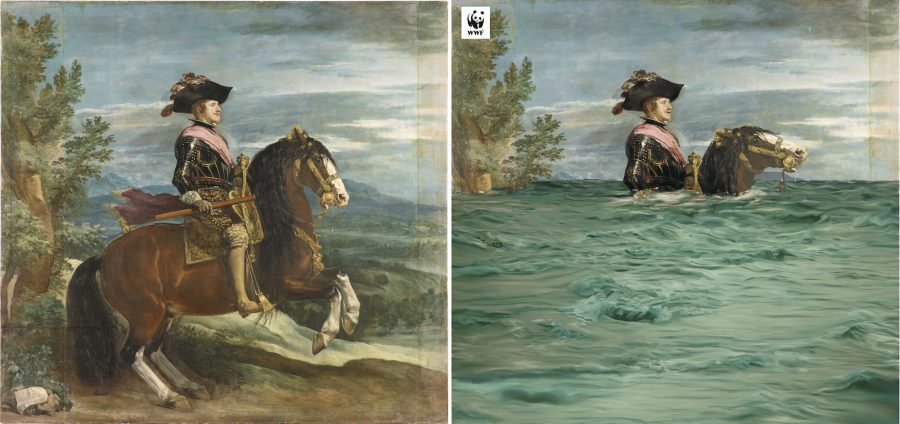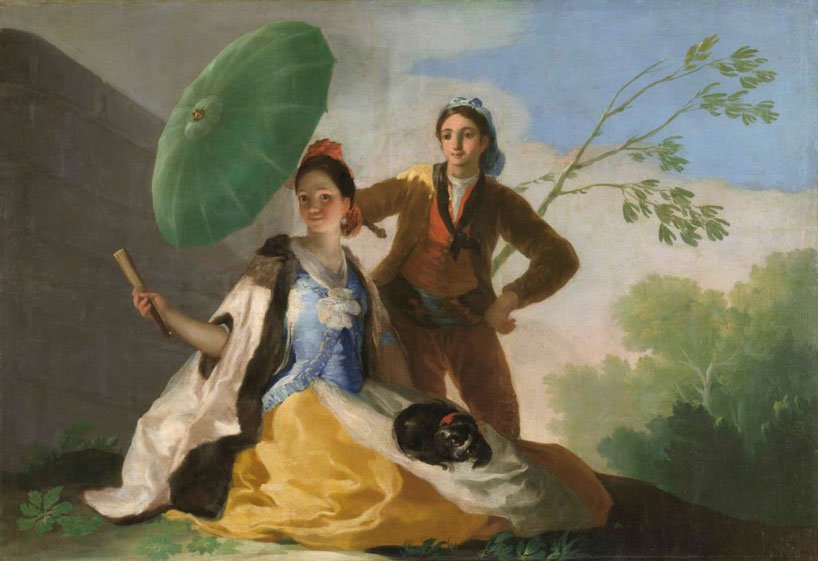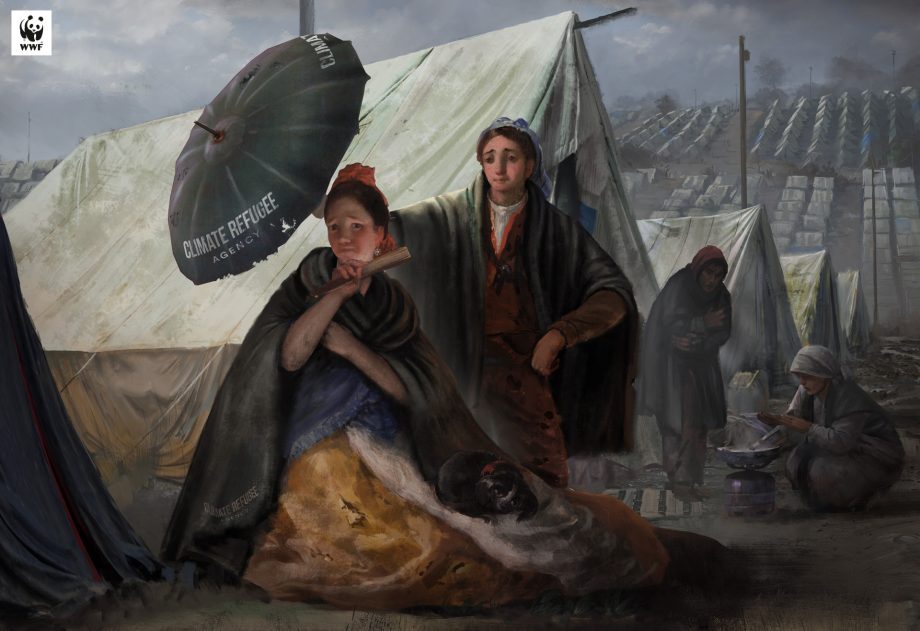[Most Recent Entries] [Calendar View]
Monday, December 16th, 2019
| Time | Event |
| 8:29a | Blues Musician Plays a Soul-Stirring Version of “Amazing Grace” at His Mother’s Funeral The Dust to Digital Facebook page sets the scene: "Christone 'Kingfish' Ingram, play[s] an amazing and touching version of "Amazing Grace" at the funeral of his mother, Princess Pride, today. She was a great supporter of her son, and would have turned 50 tomorrow." Amazing and touching indeed. Make sure you play it all of the way through. And when you start the video, manually move up the volume icon at the bottom right of the video. In case it's not already clear, Kingfish is a professional blues musician. You can catch his videos on Youtube, including this sweet version of “I Put A Spell On You.” Blues Musician Plays a Soul-Stirring Version of “Amazing Grace” at His Mother’s Funeral is a post from: Open Culture. Follow us on Facebook, Twitter, and Google Plus, or get our Daily Email. And don't miss our big collections of Free Online Courses, Free Online Movies, Free eBooks, Free Audio Books, Free Foreign Language Lessons, and MOOCs. |
| 9:00a | The Prado Museum Digitally Alters Four Masterpieces to Strikingly Illustrate the Impact of Climate Change According to the United Nations’ Intergovernmental Panel on Climate Change, global warming is likely to reach 1.5°C above pre-industrial levels between 2030 and 2052 should it continue to increase at its current rate. What does this mean, exactly? A catastrophic series of chain reactions, including but not limited to: --Sea level rise Look to the IPCC’s 2018 Special Report: Global Warming of 1.5°C for more specifics, or have a gander at these digital updates of masterpieces in Madrid’s Museo del Prado's collections. The museum collaborated with the World Wildlife Fund, choosing four paintings to be altered in time for the recently wrapped Madrid Climate Change Conference.
Artist Julio Falagan brings extreme drought to bear on El Paso de la Laguna Estigia (Charon Crossing the Styx) by Joachim Patinir, 1520 - 1524
Marta Zafra raises the sea level on Felipe IV a Caballo (Philip the IV on Horseback) by Velázquez, circa 1635. The Parasol that supplies the title for Francisco de Goya’s El Quitasol of 1777 becomes a tattered umbrella barely sheltering miserable, crowded refugees in the sodden, makeshift camp of Pedro Veloso’s reimagining.
And the Niños en la Playa captured relaxing on the beach in 1909 by Joaquín Sorolla now compete for space with dead fish, as observed by artist Conspiracy 110 years further along. None of the original works are currently on display. It would be a public service if they were, alongside their drastically retouched twins and perhaps Hieronymus Bosch’s The Garden of Earthly Delights, to further unnerve viewers about the sort of hell we'll soon be facing if we, too, don’t make some major alterations. For now the works in the +1.5ºC Lo Cambia Todo (+1.5ºC Changes Everything) project are making an impact on giant billboards in Madrid, as well as online. Related Content: Global Warming: A Free Course from UChicago Explains Climate Change Climate Change Gets Strikingly Visualized by a Scottish Art Installation A Century of Global Warming Visualized in a 35 Second Video Perpetual Ocean: A Van Gogh-Like Visualization of our Ocean Currents Ayun Halliday is an author, illustrator, theater maker and Chief Primatologist of the East Village Inky zine. Join her in NYC on Monday, January 6 when her monthly book-based variety show, Necromancers of the Public Domaincelebrates Cape-Coddities by Roger Livingston Scaife (1920). Follow her @AyunHalliday. The Prado Museum Digitally Alters Four Masterpieces to Strikingly Illustrate the Impact of Climate Change is a post from: Open Culture. Follow us on Facebook, Twitter, and Google Plus, or get our Daily Email. And don't miss our big collections of Free Online Courses, Free Online Movies, Free eBooks, Free Audio Books, Free Foreign Language Lessons, and MOOCs. |
| 3:00p | How Andrew Wyeth Made a Painting: A Journey Into His Best-Known Work Christina’s World Andrew Wyeth died a decade ago, but his status as a beloved American painter was assured long before. He painted his best-known work Christina's World in 1948, a time in American painting when images of immediately recognizable fields, farmhouses, and middle-aged women were not, to put it mildly, in vogue. But Christina's World has survived right alongside, say, Jackson Pollock's drip paintings from the very same year. How it has done so — and what way of seeing enabled Wyeth to paint it with such confidence in the first place — constitutes the subject of this new video essay by Evan Puschak, better known as the Nerdwriter (whose investigations into Picasso, Rembrandt, Van Gogh, Hopper and others we've previously featured here on Open Culture). "Being realistic and dramatic, Christina's World more easily fits the shape of our memories, our dreams, our fears and cravings," says Pucshak. "In other words, it resembles a story." Not only does the painting's combination of the familiar and the unknown fire up our imagination, getting us to generate narratives to apply to it, it also guides our vision, taking us on a journey from woman to house to barn and back again. But for all its appearance of pastoral reverie, it also has a certain darkness about it, hinted at by the colors, which are muted, reflecting the particular austerity of New England landscapes, a common image in early American art and thought," as well as the body of Christina herself, lifted from the earth only by "thin and contorted arms." The real Christina, as is now common art-historical knowledge, suffered from a disease of the nervous system that robbed her of her ability to walk; her preference of crawling rather than using a wheelchair meant that she navigated her world in a much different manner than most of us do. But even as Wyeth shows us one variety of little-acknowledged human limitation, he also shows us another variety of little-acknowledged human ability. Puschak suggests that Wyeth was "looking for a secret in nature," and in the search became the transcendentalist writer Ralph Waldo Emerson's "transparent eye-ball," which contains nothing yet sees everything. "He sees in the nature around him, even in the barren landscapes of new England, something profoundly real," says Puschak. "As an artist, he helps us to see it too." He also reminds us 21st century urbanites, who dwell as much in the digital realm as the physical one, of the "piece of us in the land, in the trees, in the sky, and a sense of wholeness waits for us when we can remember not to forget it." The idea may sound as unfashionable as realism looked in Wyeth's day, but to the artist's own mind, he was never a realist at all. "My people, my objects breathe in a different way," he once said. "There's another core — an excitement that's definitely abstract. My God, when you really begin to peer into something, a simple object, and realize the profound meaning of that thing — if you have an emotion about it, there's no end." Related Content: How To Understand a Picasso Painting: A Video Primer What Makes The Night Watch Rembrandt’s Masterpiece Van Gogh’s Ugliest Masterpiece: A Break Down of His Late, Great Painting, The Night Café (1888) Edward Hopper’s Iconic Painting Nighthawks Explained in a 7-Minute Video Introduction Based in Seoul, Colin Marshall writes and broadcasts on cities, language, and culture. His projects include the book The Stateless City: a Walk through 21st-Century Los Angeles and the video series The City in Cinema. Follow him on Twitter at @colinmarshall or on Facebook.
How Andrew Wyeth Made a Painting: A Journey Into His Best-Known Work Christina’s World is a post from: Open Culture. Follow us on Facebook, Twitter, and Google Plus, or get our Daily Email. And don't miss our big collections of Free Online Courses, Free Online Movies, Free eBooks, Free Audio Books, Free Foreign Language Lessons, and MOOCs. |
| 8:00p | Jimi Hendrix Hosts a Jam Session Where Jim Morrison Sings Drunkenly; Jimi Records the Moment for Posterity (1968) Two psych rock superstars at the height of their fame, both notorious for epic drug and alcohol consumption, and neither particularly suited to the other’s sensibility, Jim Morrison and Jimmy Hendrix might have been an oddly consonant musical pairing, or not. Morrison, the egomaniac, looked inward, mining his dark fantasies for material. Hendrix, the introvert, ventured into the reaches of outer space in his expansive imagination. What might come of a musical meeting? We know only what transpired one night at Manhattan's Scene Club in 1968, and let’s just say it didn’t go particularly well. It seems unfair to lob criticism at a bootlegged, one-off, improvised performance. But that hasn’t stopped critics from doing so. The recording has appeared under several names, including Sky High, Bleeding Heart, Morrison/Hendrix/Winter (under the assumption Johnny Winter played on it), and as the very resonantly titled Woke up this morning and found myself dead. Eventually, some anonymous distributer settled on Morrison’s Lament, “an apt title,” Ron Kretsch writes at Dangerous Minds, “if by ‘lament’ one means ‘drunken, formless discharge of inane profanities.” Morrison, it seems, invited himself onstage, and Hendrix, who made the tape himself, seems not to mind the intrusion. At one point, you can hear him tell the Doors’ singer to “use the recording mic.” Some bootlegs credit Morrison for the harmonica playing, while others credit Lester Chambers. Hendrix starts with his go-to blues jam, “Red House.” He’s backed—depending on which liner notes you read—by either Band of Gypsys’ drummer Buddy Miles or McCoy’s drummer Randy Zehringer. Rick Derringer may have played rhythm guitar. Johnny Winter reportedly denied having been there, but the Scene Club was owned by his manager, Steve Paul. “Jimi was a frequent visitor here,” writes Hendrix biographer Tony Brown in the notes for a 1980 copy of the session. “He loved he atmosphere and also loved to jam and as he always had a tape machine on hand, that night was captured forever.” That's a very mixed blessing. “Some of the tracks kinda kick ass,” writes Kretsch, including the effortlessly brilliant “Red House” Hendrix and band play in the first six minutes or so at the top. Then Morrison steps onstage and begins to howl—sounding like a random inebriated audience member who's lost all inhibition, instead of the eerily cool singer of “Riders on the Storm.” Maybe there’s good reason to hear Morrison bellowing “save me, woman!” as a serious cry for help. But there’s little reason to take this performance seriously. If that still leaves you wondering—what might have resulted from a sober, well-rehearsed session between these two?—you’ll have to make-do with the mashup above, which convincingly combines Morrison’s “Riders on the Storm” vocals with Hendrix’s “Hey Joe” playing. Listen at least until the solo at around 1:20 to hear Ray Manzarek's organ trickle in. Now that would have been a great collaboration. If you every come across any bootlegged Manzarek and Hendrix jams, send them our way.... Related Content: Jimi Hendrix Plays the Beatles: “Sgt. Pepper’s,” “Day Tripper,” and “Tomorrow Never Knows” Josh Jones is a writer and musician based in Washington, DC. Follow him @jdmagness. Jimi Hendrix Hosts a Jam Session Where Jim Morrison Sings Drunkenly; Jimi Records the Moment for Posterity (1968) is a post from: Open Culture. Follow us on Facebook, Twitter, and Google Plus, or get our Daily Email. And don't miss our big collections of Free Online Courses, Free Online Movies, Free eBooks, Free Audio Books, Free Foreign Language Lessons, and MOOCs. |
| << Previous Day |
2019/12/16 [Calendar] |
Next Day >> |

